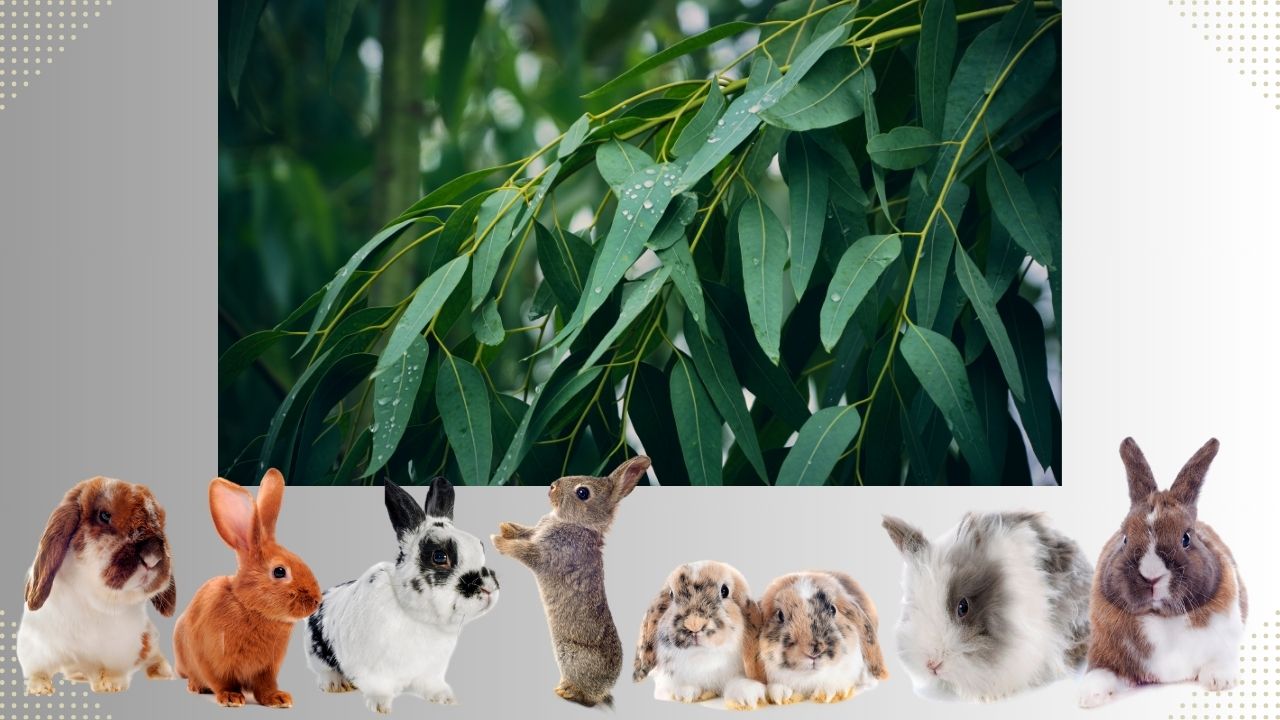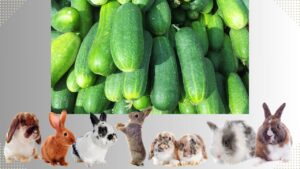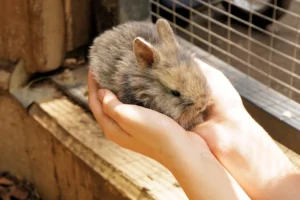Do you ever wonder if your furry friend can munch on tree leaves?
Well, the answer is yes! Rabbits can indeed eat certain types of tree leaves. In fact, these leaves can provide them with valuable nutrients.
However, it’s important to be cautious and know which leaves are safe for your rabbit, as some can be harmful.
In this article, we will explore the types of tree leaves that are safe for rabbits, their nutritional benefits, and how to incorporate them into a balanced diet.
In This Article
- 1 Key Takeaways
- 2 Types of Tree Leaves Safe for Rabbits
- 3 Nutritional Benefits of Tree Leaves for Rabbits
- 4 Precautions When Feeding Tree Leaves to Rabbits
- 5 Tree Leaves to Avoid Feeding Rabbits
- 6 How to Prepare Tree Leaves for Rabbit Consumption
- 7 Incorporating Tree Leaves Into a Balanced Rabbit Diet
- 8 Frequently Asked Questions
Key Takeaways
- Apple leaves, willow leaves, birch leaves, and raspberry leaves are safe for rabbits to eat.
- Tree leaves provide rabbits with important vitamins, minerals, and fiber.
- It’s important to introduce new types of leaves gradually to monitor for potential allergies.
- Offering a variety of tree leaves in a rabbit’s diet ensures they receive a balanced range of nutrients and prevents boredom.
Types of Tree Leaves Safe for Rabbits
You should feed your rabbit the tree leaves that are safe for them to eat. Rabbits can enjoy a variety of tree leaves, but it’s crucial to ensure that they’re safe and suitable for their consumption.
Some safe tree leaves for rabbits include apple, willow, birch, and raspberry leaves. These leaves aren’t only tasty for rabbits but also provide them with essential nutrients. Apple leaves are rich in vitamins A and C, while willow leaves contain salicin, a natural pain reliever. Birch leaves are known to have diuretic properties, which can help rabbits with urinary issues. Raspberry leaves are beneficial for pregnant or lactating rabbits as they support the reproductive system.
Nutritional Benefits of Tree Leaves for Rabbits
Rabbits can gain essential nutrients from tree leaves by consuming them in moderation and with a variety of options. Tree leaves, such as apple, willow, birch, and raspberry leaves, can provide rabbits with important vitamins, minerals, and fiber.
However, it’s important to note that some rabbits may have potential allergies to certain tree leaves. It’s recommended to introduce new types of leaves gradually and monitor your rabbit for any signs of allergic reactions, such as sneezing, itching, or digestive issues.
Additionally, offering a variety of tree leaves in a rabbit’s diet is crucial. This ensures that they receive a balanced and diverse range of nutrients. Incorporating different types of leaves also helps prevent boredom and encourages foraging behavior, which is beneficial for a rabbit’s mental and physical well-being.
Remember to consult with a veterinarian for specific advice based on your rabbit’s individual needs.
Precautions When Feeding Tree Leaves to Rabbits
Make sure to carefully wash tree leaves and remove any potential contaminants before feeding them to your rabbits, as well as monitoring for any signs of adverse reactions.
While tree leaves can be a nutritious addition to your rabbit’s diet, it’s important to be aware of common tree leaf allergies and the potential risks of feeding them to your furry friends.
Some rabbits may have allergies to certain types of tree leaves, such as oak or maple. These allergies can cause symptoms like itching, swelling, or difficulty breathing. To avoid any allergic reactions, it’s best to introduce tree leaves gradually and observe your rabbits for any adverse reactions.
Additionally, it’s crucial to ensure that the tree leaves you feed your rabbits are free from pesticides, herbicides, or other harmful chemicals. Washing the leaves thoroughly can help remove any potential contaminants that could harm your rabbits’ health.
Tree Leaves to Avoid Feeding Rabbits
Avoid feeding rabbits tree leaves from poisonous plants, as ingesting them can lead to severe health issues. Some tree leaves contain toxins that can be harmful to rabbits when consumed. It’s important to be aware of the toxic tree leaves and signs of leaf poisoning in order to keep your rabbits safe and healthy.
Some common toxic tree leaves include oak, cherry, yew, and rhododendron. Signs of leaf poisoning in rabbits may include diarrhea, vomiting, loss of appetite, excessive salivation, and lethargy. If your rabbit shows any of these symptoms after consuming tree leaves, it’s important to seek immediate veterinary attention.
Providing a safe and suitable diet for your rabbits is crucial to their well-being, so always make sure to research and avoid feeding them any tree leaves that may be toxic.
How to Prepare Tree Leaves for Rabbit Consumption
To ensure your rabbits can safely consume tree leaves, you should thoroughly wash and chop them before feeding. Here are four important reasons why this is necessary:
- Tree leaf toxicity: Some tree leaves can be toxic to rabbits if consumed without proper preparation. Washing helps remove any potential toxins or pesticides that may be present on the leaves.
- Digestive health: Chopping tree leaves into smaller, more manageable pieces makes it easier for rabbits to chew and digest them. This reduces the risk of digestive problems such as blockages or discomfort.
- Nutritional value: Chopping the leaves exposes more surface area, increasing the availability of nutrients for rabbits. This ensures they receive the maximum benefit from the leaves they consume.
- Safety precautions: Thoroughly washing and chopping tree leaves also helps remove any dirt, debris, or harmful bacteria that may be present. This helps prevent any potential health risks to your rabbits.
Incorporating Tree Leaves Into a Balanced Rabbit Diet
You can include a few tree leaves in your rabbit’s balanced diet to provide them with additional nutrients and variety. Tree leaves can be a great addition to your rabbit’s diet, but it’s important to ensure that you are providing the right types of leaves and introducing them in a safe and gradual manner. Here are some tree leaf foraging tips and creative ways to introduce tree leaves to your rabbits’ diet:
| Tree Leaf Foraging Tips | Creative Ways to Introduce Tree Leaves |
|---|---|
| 1. Choose safe and non-toxic tree leaves. | 1. Mix small pieces of tree leaves with your rabbit’s regular food. |
| 2. Wash the leaves thoroughly to remove any dirt or pesticides. | 2. Offer tree leaves as a treat or reward during playtime. |
| 3. Introduce tree leaves gradually to avoid digestive issues. | 3. Stuff tree leaves into rabbit-safe toys for added enrichment. |
Frequently Asked Questions
Can Rabbits Eat Any Type of Tree Leaves?
Yes, rabbits can eat certain types of tree leaves. However, it’s important to be cautious as some tree leaves may cause allergies in rabbits. Stick to safe tree leaves like apple, willow, and raspberry.
Are All Tree Leaves Equally Nutritious for Rabbits?
Not all tree leaves are equally nutritious for rabbits. While some may provide essential nutrients, others could pose potential risks. Consider researching specific tree leaves to ensure your rabbit’s nutritional needs are met and to avoid any harmful effects.
What Should I Do if My Rabbit Shows Signs of Discomfort After Eating Tree Leaves?
If your rabbit shows signs of discomfort after eating tree leaves, it’s important to assess if the leaves are poisonous. If they are, contact a veterinarian immediately for guidance on how to treat your rabbit.
Can Rabbits Eat Tree Leaves From Fruit Trees?
Rabbits can eat tree leaves from fruit trees, but not all are safe. Some leaves, like apple or pear, have nutritional value and are safe for rabbits. Be cautious and research before feeding.
Can I Feed My Rabbit Tree Leaves From My Backyard?
Feeding your rabbit tree leaves from your backyard may pose potential risks, such as toxicity or pesticide exposure. It’s best to stick to safe alternatives like fresh hay, vegetables, and specially formulated rabbit pellets for a balanced diet.





